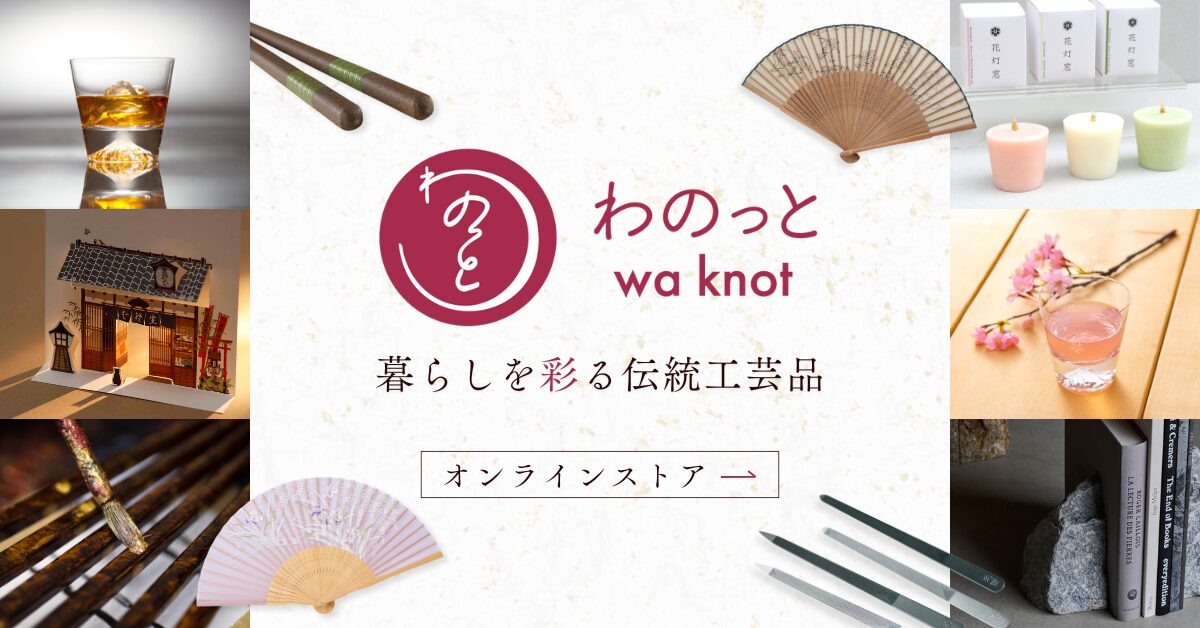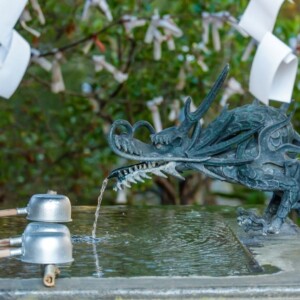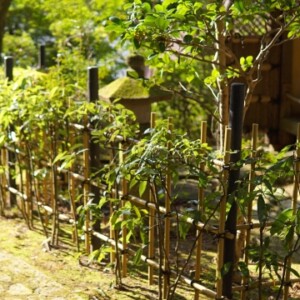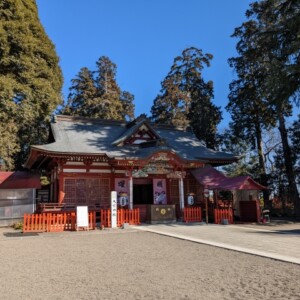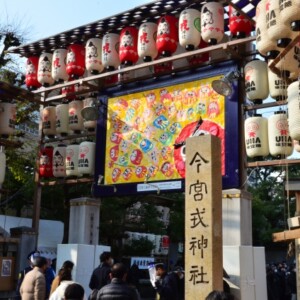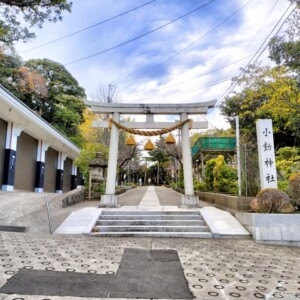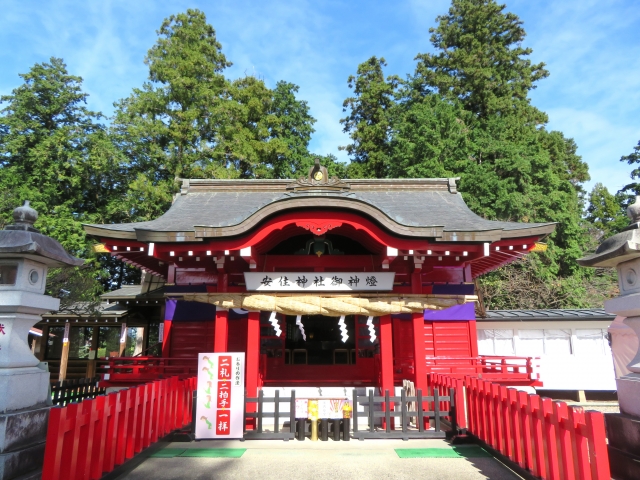
Azumi-jinja Shrine|Complete guide to the history, highlights, and worship information of this historic shrine
Azumi Shrine, located in Takanezawa-cho, Shioya-gun, Tochigi Prefecture, is a historic shrine with a history of more than 1,100 years since the Heian Period. While the shrine has long been worshipped as a place to pray for protection from bad luck and easy childbirth, in recent years it has become a hot spot visited by many riders as the first shrine to be certified as a motorcycle shrine in Japan. The shrine is full of attractions that attract visitors, such as the largest torii gate in the Kanto region, golden guardian dogs, and the dedication of a large rice cake weighing approximately 700 kg.
Overview and Basic Information on Azumi Shrine
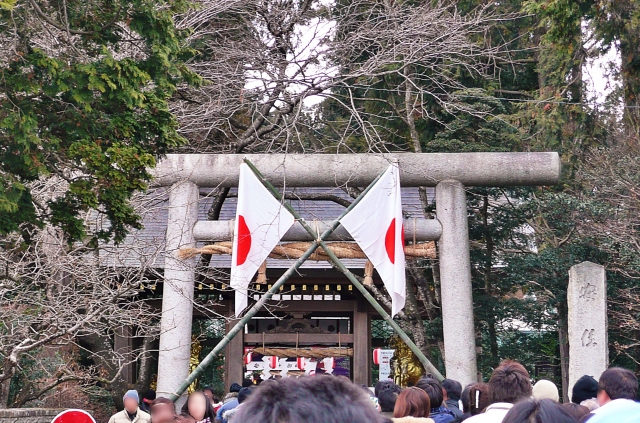
Azumi Shrine is located in the countryside of Tochigi Prefecture, and its vermilion-lacquered grand torii gate has an eye-catching presence even from a distance. As a shrine that is a follower of the Sumiyoshi faith, it has been worshipped by many people since ancient times.
History and Origin
The Azumi Shrine dates back to the 2nd year of Shoutai (899 A.D.). It is said that Yoshiaki Arai, the first chief priest of the shrine, invited the spirit of the great deity of the Settsu Sumiyoshi Taisha Shrine (in present-day Osaka Prefecture) to this place for the protection of the nation.
Since its establishment in the Heian period (794-1185), the shrine has been deeply loved by the local people. Before the Meiji Restoration, the shrine was called “Shoichi Azumi Daimyojin,” but after the Meiji Restoration, the name was changed to the current “Azumi Shrine. Initially, the shrine was rated as a township shrine, but it has a history of later becoming a village shrine.
After the war, the shrine precincts were especially improved, and the shrine developed to its present form with the construction of the vermilion-lacquered Otorii (Grand Gate) in 1982 and the construction of the shrine gate and dedication of golden guardian dogs in 1990.
Gods and Benefits
The three deities of Azumi Shrine are the three Sumiyoshi deities, Sokoatsutsuno-no-mikoto, Nakaatsutsuno-no-mikoto, and Uwatsutsuno-no-mikoto, and Empress Jingu (Princess Isochotsuzoku no Mikoto).
The three Sumiyoshi deities were born when Izanagi no Mikoto performed misogi purification, and are revered as “gods of purification. Therefore, they are believed to be very beneficial for prayers to ward off bad luck, direction, and misfortune.
Empress Jingu is known as the “God of Childbirth,” and is deeply worshipped as the god of childbirth and child-rearing, based on the legend that she went to the Sanhan expedition with her child in her arms, but returned safely and gave birth to Emperor Ojin through the divine grace of Azumi Okami. The shrine is also called “God of Peaceful Dwelling” because of the name of the shrine, “Azumi,” and is well known for its blessings for family safety.
Highlights of Azumi Shrine
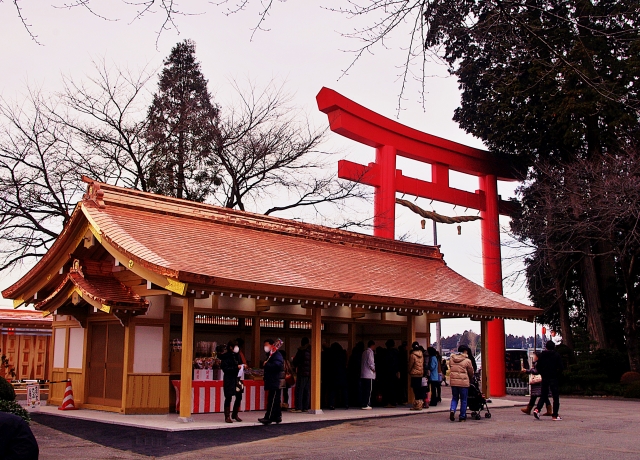
Azumi Shrine has numerous attractions that fascinate visitors. Particularly impressive are the many magnificent structures that suddenly appear in the midst of the rural landscape.
Kanto’s largest torii gate and vermilion-lacquered beauty
The vermilion-lacquered Otorii, the symbol of Azumi Shrine, was erected in 1982. With a height of 12 meters and a width of 14.4 meters, the Myojin-torii is the largest in the Kanto area.
Even from a distance, its presence is overwhelming, and the sight of its vivid vermilion color against the peaceful countryside is truly a sight to behold. Many visitors come to see the Otorii, which has become synonymous with Azumi Shrine.
Charming golden guardian dogs and the main shrine
Upon entering the shrine grounds, the first thing that catches the eye is the golden guardian dogs. This is the work of the famous sculptor Kitamura Nishimochi, dedicated in 1990. Made of copper and decorated with gold leaf, the komainu is of great cultural value and testifies to the prestige of the shrine.
The main shrine is a beautiful vermilion-lacquered structure whose majestic appearance leaves a deep impression on visitors. The architectural style of the shrine is magnificent, and visitors can feel the dignity of a historic shrine.
The main shrine, designated as a cultural property by Tochigi Prefecture
The present main hall was built around 1754 and is designated as a cultural property by Tochigi Prefecture. It is highly valued for its cultural value as a valuable structure that conveys the architectural techniques of the mid-Edo period.
The detailed decorations and the dignified appearance cultivated over the years leave a deep impression on visitors.
Characteristics as a Motorcycle Shrine
In recent years, Azumi Shrine has rapidly gained recognition as a “motorcycle shrine” and has become a sacred place visited by riders from all over Japan. It is fascinating to see how a traditional shrine has embraced new forms of worship and developed in step with the times.
Background of the First National Motorcycle Shrine Recognition
In 2008, Azumi Shrine established a motorcycle shrine as the last shrine on its grounds. At the time, traffic accidents were increasing along with the number of returning riders, so the shrine was established to pray for the safety of riders. The shrine enshrines Nakatsutsuono-no-mikoto, the deity responsible for traffic safety.
In 2013 (Heisei 25), the shrine was certified as the first “Motorcycle Shrine” by the National Federation of Motorcycle Cooperative Associations. With this certification, Azumi Shrine has become a focus of attention from riders nationwide and is now widely recognized as a “motorcycle shrine.
In an interesting episode, it was in the hall of the Azumi Shrine that Honda’s founder, Soichiro Honda, decided to locate his research institute in the nearby Haga-Takanezawa Industrial Park. The shrine is also believed to have deep significance in the development of the area as a motorcycle shrine, due in part to its historical ties to the many meetings held there with all concerned parties.
Services for Riders and Prayers for Traffic Safety
Azumi Shrine offers heartwarming services for riders who visit the shrine by motorcycle. Free canned coffee and juice are offered to visitors, and shrine maidens take commemorative photos. The photos are displayed at the shrine, providing a place for riders to interact with each other.
Various stickers are also distributed (some for a fee), and these stickers become the talk of the town among fellow bikers, creating a virtuous cycle that attracts even more visitors to the shrine. The countless photos and stickers of riders who have visited the shrine are a testament to the shrine’s popularity.
Annual and Seasonal Events
A variety of events and festivals are held at Azumi Shrine throughout the year, attracting many worshippers and tourists. In particular, the large kagamimochi dedication ceremony in winter is famous throughout Japan and has been covered by many media.
Daikagamimochi Dedication Ceremony and Setsubun Festival
The “Daikagamimochi Dedication Ceremony,” which began in 1982 with the construction of the Otorii (Grand Gate), is a representative annual event of Azumi Shrine. The ceremony is held every year on December 30, when a giant mirror-shaped rice cake weighing approximately 700 kg is dedicated using eight bales of glutinous rice harvested from the shrine’s rice paddies.
This large mirror-shaped rice cake is stacked three high, measuring approximately 90 centimeters high and 1 meter and 10 centimeters in diameter. It is also unique in that instead of daidai, a large citrus fruit called banbakuyuzu is placed on top of the rice cake, which is usually placed on top of the rice cake.
During the Setsubun Festival on February 3, these large mirror-shaped mochi are distributed to worshippers as blessing rice cakes, attracting crowds of people who wish for a good harvest and good health. This series of events is highly regarded as a valuable effort to pass on the traditional culture of the region to the present day.
Helicopter Flight Experience
A heliport is maintained in the parking lot of Azumi Shrine in preparation for disaster relief and lifesaving. It was established in response to lessons learned from the Great East Japan Earthquake, and is utilized as part of its contribution to the local community.
On May 3 (May 4 in case of rain), the annual Helicopter Flight Experience is held, offering a 3-minute flight experience in a Bell 505 for 6,000 yen for adults and 5,000 yen for children (children under 2 years old are free). This event aims to familiarize local residents and visitors with the helicopter’s function as a takeoff and landing site, and is a popular family event.
Visitor Information
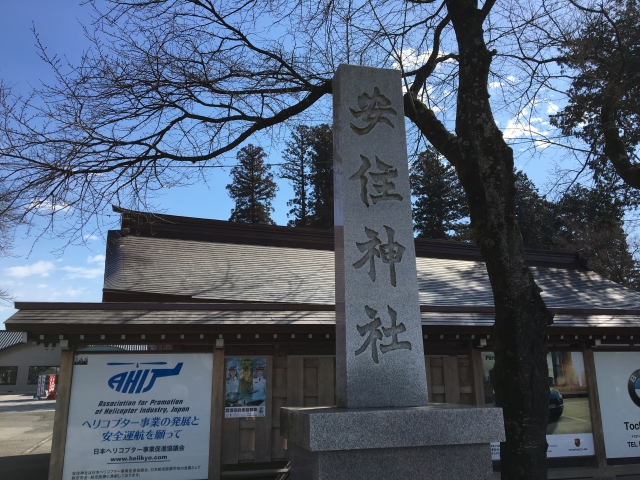
Worship at Azumi Shrine can be conducted in a friendly atmosphere for modern visitors, while respecting the ancient manners of the shrine. In particular, many visitors come to the shrine to pray for safe delivery and traffic safety for motorcycles, and it is possible to visit the shrine according to their individual wishes.
Worship Etiquette and Manners
The manner of worship at Azumi Shrine is the same as at most Shinto shrines. First, bow lightly as you pass through the Otorii gate and avoid the center of the path. After purifying your hands and mouth at the hand- and mouth-watering booths, you should enter the hall of worship in the manner of “ni-sho, ni-sho, ni-sho, ni-sho, ni-sho, ni-sho, ni-sho.
If you are visiting by motorcycle, park your vehicle in the designated parking lot and organize your helmet and other accoutrements before heading to the shrine. Riders are warmly welcomed at the shrine.
If you wish to pray, no prior reservation is required, and prayers are accepted from 9:00 a.m. to 3:40 p.m. Prayers for safe delivery are especially popular, and prayers are offered daily.
Red Seal and Good Luck Charm Information
Two types of red seals, “Azumi Shrine” and “Bike Shrine,” are available at Azumi Shrine. Each has a starting fee of 500 yen, but if you receive a red seal book, the cost of the two types of red seals is included.
The “Azumi Shrine” version has the Otorii gate on the front and a large rice cake offering on the back. The “Motorcycle Shrine” version is a special edition with a rider design and a serial number printed on it. Both editions are priced at 2,000 yen and come with a transparent waterproof cover.
A wide variety of amulets are available, including those for safe delivery, traffic safety, and protection from bad luck. The motorcycle amulets are particularly popular, and include unique designs such as a terutaruboushi monk wearing a helmet.
Access and Visiting Information
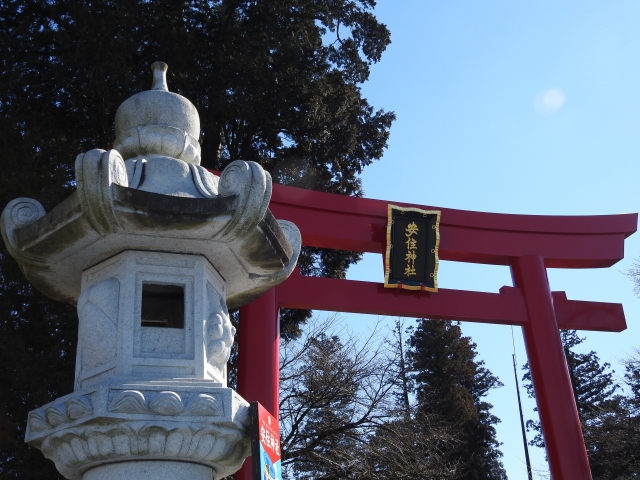
Azumi Shrine is located in Takanezawa-cho, Shioya-gun, Tochigi Prefecture, and is conveniently accessible by car. Cabs are recommended for public transportation.
Traffic Access
By car: Approximately 23 km from the Utsunomiya Interchange on the Tohoku Expressway, take National Route 119 and Prefectural Route 64 eastward. Enter “028-675-0357” in your car navigation system for accurate directions.
If coming by train, the nearest station is Hozakuji Station on the JR Utsunomiya Line. It is about a 15-minute cab ride from Hozakuji Station and about a 30-minute ride from Utsunomiya Station. Bus service is limited, so a cab is the surest way to get there.
The temple is located near the Haga-Takanezawa Industrial Park, where Honda’s Production Headquarters Tochigi Office and Honda R&D Center are located, and is marked by a vermilion-lacquered grand gate in a peaceful rural setting.
Hours of worship, fees, and parking information
Regular hours of worship at Azumi Shrine are as follows
- Gozyosho (votive altar): 9:00 a.m. – 3:50 p.m.
- Red Seal: 9:00 a.m. – 3:40 p.m.
- Prayer desk: 9:00 a.m. – 3:40 p.m.
- Prayer time: after 9:00 a.m. to 3:50 p.m.
There is no charge to visit the shrine, but a prayer fee is required if you wish to pray. Parking is free, and there are several parking lots from parking lot 1 to 3, which can accommodate large buses. During peak season, such as New Year’s, the parking lot becomes crowded, so we recommend that you allow plenty of time for your visit.
Parking Lot 2 is also used as a heliport, and its use may be partially restricted on days when flight experiences are held.
<Address> 2313, Kamitakanezawa, Takanezawa-cho, Shioya-gun, Tochigi 329-1224
Reference site
Azumi Shrine Official Website: https://www.yasuzumi.com/
Takanezawa Azumi Shrine introduction page: https://www.town.takanezawa.tochigi.jp/kanko/spot/yasuzumi.html


